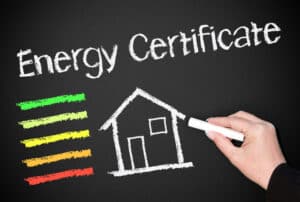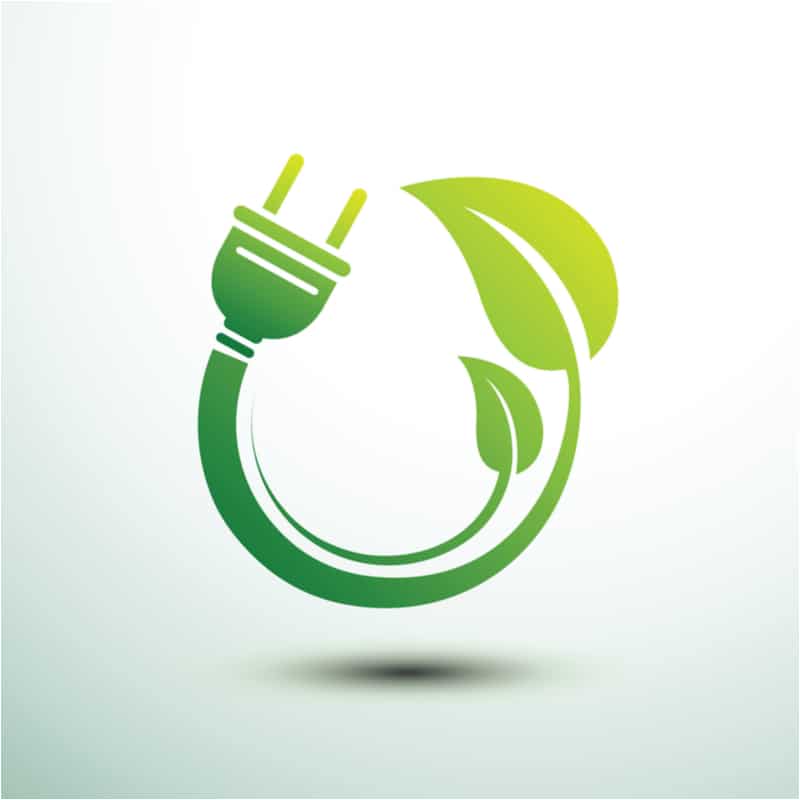Reduce Your Carbon Footprint With Green Energy
Are you curious about how a company, driven by a commitment to sustainable practices and corporate social responsibility, can effectively reduce its carbon emissions? In this article, we'll explore various green energy options that such a company can adopt to make a positive impact on the environment. From on-site power generation to embracing renewable energy sources and investing in renewable energy certificates, there are numerous ways for businesses to go green.
On-site power generation is one approach that allows companies to generate their own electricity using renewable sources like solar panels or wind turbines. By producing clean energy on-site, companies can reduce their reliance on fossil fuels and lower their carbon footprint significantly. Not only does this help the environment, but it can also lead to cost savings over time.
What is Green Energy?
Green energy, also known as renewable energy, is a sustainable and environmentally conscious alternative to conventional energy sources. It aims to mitigate the adverse effects of climate change and reduce the overall ecological footprint by utilizing naturally replenishing resources that do not deplete over time. This energy paradigm stands in stark contrast to fossil fuels such as coal, oil, and natural gas, which not only emit copious amounts of greenhouse gases like carbon dioxide and methane but also cause significant air pollution, posing severe threats to human health and the environment.
One of the prominent and widely adopted forms of green energy news is solar energy. It harnesses the radiant light and heat from the sun through photovoltaic panels or solar thermal systems, converting it into electricity or heat for various applications. This inexhaustible energy source offers incredible potential to meet a significant portion of global energy demand sustainably.
Renewable energy

The government supports the development of renewable energy by offering a tax credit. The investment tax credit (ITC) reduces installation costs and accelerates the payback of qualifying technologies. Renewable energy provides jobs in local communities. Globally, renewable energy produced 11.2 percent of total energy in 2018, and the number is predicted to increase. Renewable energy sources include geothermal, hydro, wind, biomass, and biofuels. In the United States, the ITC is now extended to 2030 and is capped at 10 percent in 2024. State incentives are also available.
Hydropower is the largest renewable energy source in the U.S. and is particularly suitable for offshore and high-altitude locations. Hydropower utilizes flowing water to turn turbines, which produce electricity. Large hydropower facilities also produce greenhouse gases, carbon dioxide, and methane. These hydropower facilities can also alter water temperatures and flood adjacent lands. But despite their advantages, they are not without their challenges. Hydropower is not suitable for all locations, and it isn't always the best solution.
The environmental benefits of green energy surpass those of conventional sources. Reducing air pollution and carbon footprint, it diversifies the nation's energy supply. The EPA, the US government's leading agency for environment and energy, purchases renewable energy in various forms to stimulate the green power marketplace. These purchases are part of the EPA's efforts to reduce greenhouse gas emissions from energy consumption. There are several reasons for this move to green power.
The price of renewable energy continues to fall. As a result of economies of scale, the cost of green energy is rapidly reducing. For example, the cost of wind energy fell 20 percent between 2010 and 2012. Since 1980, the cost of green energy has dropped 80 percent. Green energy is now more affordable than ever and will continue to grow in the market. If you're thinking of building a new home, renewable energy may be a good option.
Historically, the primary sources of renewable energy were human labor, animal power, and water power. Biomass is now being used to produce fuels. In 2010, biomass provided 2.7% of the world's transportation fuel. By 2050, the amount will reach 25%. The benefits of renewable energy for green energy are numerous. The following is a list of some of the most popular sources. You might also be surprised at what you can produce!
Transitioning to green energy is not an easy process. Not all sustainable solutions are right for every location. Location and climate can greatly influence how efficient they are. Renewables are important to energy development, but they can't solve all your problems. In addition to environmental concerns, energy leaders should also consider the economic benefits of renewable energy. The Midwest, Texas region, and offshore are the best places for wind farms. So, when thinking about making the transition to sources of green energy, make sure you choose the right path.
Types of Green Energy
Solar Energy
Solar energy stands as a pioneering and transformative green energy source, harnessing the sun's radiant energy through photovoltaic cells to convert sunlight into electricity. These solar panels, which can be installed on rooftops, in solar farms, and integrated into various products like solar chargers, enable the generation of electricity from an abundant and freely available resource. By tapping into the virtually unlimited power of the sun, solar energy offers an environmentally friendly alternative to conventional electricity generation methods, significantly reducing carbon emissions and helping combat climate change.
Wind Energy
Wind energy capitalizes on the natural force of the wind, propelling the blades of wind turbines and generating electricity. Wind farms are strategically situated in open areas, coastal regions, and offshore locations to maximize wind potential, as they harness the kinetic energy of moving air masses. This clean and renewable energy source serves as a dependable option for powering homes, businesses, and communities, diversifying energy portfolios and reducing reliance on fossil fuels.
Hydropower
Hydropower, also referred to as hydroelectric power, leverages the power of flowing or falling water to generate electricity. Constructed dams and reservoirs capture the water's kinetic energy, which is then converted into electrical energy through the rotation of turbines. This mature and reliable technology has been utilized for many years, contributing significantly to the production of green energy and supplying a consistent power source.
Geothermal Energy
Geothermal energy taps into the Earth's internal heat, harnessing the immense thermal energy from geothermal reservoirs. Steam generated from the heated subsurface is used to drive turbines connected to electricity generators. Geothermal power plants are typically located in geologically active regions, such as areas with hot springs and geysers. This form of green energy presents a constant and sustainable power source, capable of providing clean electricity without relying on external factors like weather conditions.
Biomass
Biomass energy derives from organic materials, including agricultural waste, wood, and other organic matter. These materials can be burned to produce heat or converted into biogas, which can then generate electricity. Biomass energy plays a crucial role in reducing waste and offering a renewable source of power, but it necessitates sustainable management practices to avoid potential environmental harm and ensure long-term viability.
How Green Energy Works
Green energy technologies operate by tapping into the inexhaustible power of renewable resources and transforming it into usable electricity. Let's delve deeper into the intricacies of the most common green energy-sources to understand their working principles:
Solar Energy
Solar energy harnesses the immense power of the sun using photovoltaic (PV) cells composed of semiconductor materials. When sunlight strikes these cells, it stimulates electrons within the material, creating an electric current. To maximize energy production, multiple PV cells are interconnected to form solar panels. When exposed to sunlight, these panels generate direct current (DC) electricity. To make this energy usable for homes and businesses, an inverter is employed to convert DC electricity into alternating current (AC), which is the standard form of electricity used in most electrical appliances and systems.
Wind Energy
Wind energy taps into the kinetic energy of moving air masses through wind turbines. These turbines consist of large blades that rotate when the wind blows. As the blades spin, they transfer the wind's kinetic energy into mechanical energy, activating a generator within the turbine. The generator then converts the mechanical energy into electricity. Wind turbines are often installed in areas with consistent and strong winds, such as open plains, coastal regions, and offshore locations. By grouping numerous wind turbines together in wind farms, energy production can be maximized, contributing to a more efficient and sustainable power generation process.
Hydropower
Hydropower harnesses the potential energy stored in flowing or falling water. Dams are constructed on rivers or water reservoirs, creating a significant difference in water height between the upstream and downstream sides. When water is released from the higher reservoir to the lower one, it flows through turbines installed within the dam structure. The force of the moving water drives the rotation of the turbines, which are connected to generators. As the turbines spin, mechanical energy is converted into electricity, making hydropower a reliable and well-established source of green energy.
Geothermal Energy
Geothermal energy harnesses the Earth's internal heat emanating from beneath the surface. To access this heat, wells are drilled into geothermal reservoirs, where hot water or steam is naturally present. The high-temperature fluid from the reservoirs is then brought to the surface and used to drive turbines connected to electricity generators. As the turbines rotate, they produce electricity from the geothermal energy. Geothermal power plants are often located in regions with geothermal activity, such as areas with hot springs and geysers. This sustainable and constant source of green energy offers a reliable power supply with minimal environmental impact.
On-site power generation

On-site power generation for green energy has a few advantages, but the most significant disadvantage maybe location. Depending on the energy resource, you may need significant land and space. If you have sufficient space and resources, you can offset part of your retail electric bill by using on-site power generation. However, it is important to consider the resource you will be using, as poor exposure to solar panels and wind turbines can cause momentary outages and damage expensive computers.
Solar photovoltaics generate electricity in accordance with the sunshine, but their electricity profiles may not match yours. This can lead to a wasteful energy management system or to top-ups from the grid. This is where battery energy storage systems come in. You can store surplus energy in batteries and use it at times when solar photovoltaics don't generate electricity, such as during low-sunshine hours or during peak grid supply times. This is called “peak shaving.”
On-site power generation for green energy is another viable option for commercial buildings. Unlike traditional energy systems, on-site power generation is much more efficient and can save a great deal of money. Because electricity production equipment is installed at the location itself, on-site power generation has a higher efficiency than conventional technologies. In addition to reducing grid energy costs, the on-site power generation method is easier to integrate into a diversified renewable energy portfolio. It's also easy to explain to stakeholders and provides a strong marketing opportunity.
As the use of renewable energy systems on commercial buildings has increased over the last decade, there are a lot of uncertainties surrounding their effectiveness. Many building owners do not have the information needed to estimate how much energy their renewable energy systems are consuming. With reliable data, decision makers can choose the best mix of strategies to increase their efficiency. The deployment of meters supporting accurate measurement of onsite renewable energy flows will help stakeholders make wise investments.
There are a number of risks associated with on-site facilities. The risks are generally lower. The costs associated with these systems are comparatively lower than the expected returns. A small number of companies may experience performance problems. For this reason, it's critical to work with a knowledgeable developer and installer. These companies can provide the knowledge and experience needed for on-site renewable energy projects. So, if you're interested in green energy, check out these benefits.
The ENERGY STAR score of properties reporting onsite renewable energy has increased tenfold. On-site renewable energy is supplying six times more energy than it did in 2009. Despite the challenges, the technology has become more affordable and smaller projects have emerged. And this trend will only continue. So, make sure your building meets the criteria required to achieve a high ENERGY STAR score. It's worth your time.
Purchasing renewable energy certificates

There are several ways to purchase renewable energy certificates (RECs) for your company. You can purchase them from third-party suppliers, who bundle them with supply contracts. You can also look for a third-party broker, who can find the cheapest option for you. The cost of RECs will depend on the source of the certificates, including state and resource requirements. For most companies, purchasing RECs directly from a third-party supplier is the most cost-effective option.
A renewable energy certificate (REC) is a market-based instrument that represents property rights to the non-power attributes associated with renewable electricity generation. Each certificate represents one megawatt-hour of electricity delivered to the grid. Although this list of attributes isn't exhaustive, other attributes may be associated with the RECs, depending on the market. In addition to renewable energy, RECs can be sold to polluting companies or individuals as carbon credits.
Renewable energy certificates, also known as green energy credits, are a legal way to offset the electricity you use from conventional sources. While purchasing renewable energy certificates is not the same as buying renewable electricity, it does have other advantages, such as creating a market for green electricity and helping protect the environment. A renewable energy certificate is a valuable tool for hotels and other businesses. You can purchase a certificate for as many as a hundred dollars.
Businesses that purchase RECs can achieve several environmental goals by using 100 percent clean energy. By purchasing RECs from wind farms, businesses can reduce their fossil fuel-generated electricity use and invest in renewable energy sources that don't produce harmful greenhouse gases. For example, a company using 1,500 MWh of electricity annually has invested in National Green-e Certified RECs from a Texas wind farm. The cost of each REC is $0.9/MWh, and the total cost for a 1,350-MWh REC is only $1350.
Purchasing renewable energy certificates can help your organization achieve its sustainability goals. RECs are certificates that represent the environmental attributes of one megawatt-hour of electricity from renewable sources. These certificates are issued to companies who wish to promote their environmental commitment. The money you earn through purchasing RECs supports the operation of renewable energy facilities. You will be able to track the energy's progress from the point of generation to your purchaser. The money you earn from your renewable energy certificates is tax-deductible.
Conclusion
As I reflect on the wealth of information about green energy, I can't help but feel inspired and empowered to make a positive impact on the environment. Learning about the various types of green-energy sources, such as solar, wind, hydropower, geothermal, and biomass, has opened my eyes to the vast potential of harnessing nature's abundance in a sustainable way.
The idea of reducing my carbon footprint through green energy solutions resonates deeply with me. I realize that transitioning to renewable energy is not only a responsible choice but also an opportunity to be part of a global movement towards a cleaner and greener future. By adopting green energy technologies like solar panels on my rooftop or supporting wind energy projects, I can play a role in mitigating climate change and protecting the planet for future generations.
Sources:
https://www.energystar.gov/about/incentives_policies/renewable_energy
https://recsmarketplace.com/what-are-recs/
https://www.progressiveenergy.org/renewable-energy-certificates/
https://youth.europa.eu/get-involved/sustainable-development/how-reduce-my-carbon-footprint_en
https://sustainability.georgetown.edu/community-engagement/things-you-can-do/
https://www.nytimes.com/guides/year-of-living-better/how-to-reduce-your-carbon-footprint

